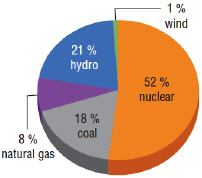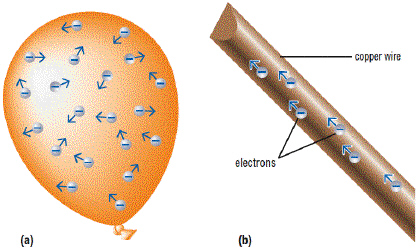Multiple Choice
Identify the
choice that best completes the statement or answers the question.
|
|
|
1.
|
Which of the following is a true statement regarding fuel cells?
a. | Fuel cells are always very large. | b. | A fuel cell is a type of electric cell through
which a continuous supply of chemicals is pumped as the cell operates. | c. | Fuel cells are
always very heavy. | d. | A fuel cell cannot operate as long as a typical
electric cell. |
|
|
|
2.
|
Computer hard drives and microchips are examples of
a. | energy sources | b. | conducting wires | c. | switches | d. | loads |
|
|
|
3.
|
All of the following are examples of secondary electric cells,
except
a. | alkaline cell | b. | car battery | c. | NiMH
battery | d. | rechargeable lithium cell |
|
|
|
4.
|
Which of the following is an aspect of electrical energy that makes it different
from other forms of energy?
a. | Its production can be controlled. | b. | It can travel long distances to where it will
eventually be used. | c. | all of the above | d. | none of the
above |
|
|
|
5.
|
Which of the following is an example of a nonrenewable energy source?
a. | thermal generation using oil | b. | geothermal energy | c. | fast-moving
water | d. | wind |
|
|
|
6.
|
What part of an electric circuit controls the flow of electrons?
a. | energy source | b. | load | c. | connecting
wire | d. | switch |
|
|
|
7.
|
Which of the following times would be the most cost efficient time to use an
electric dishwasher?
a. | Saturday at 8:00 p.m. | b. | Monday at 12:00 p.m. | c. | Wednesday at 1:00
p.m. | d. | Friday at 10:00 a.m. |
|
|
|
8.
|
Which of the following would result in the lowest cost? Assume the cost of
electricity to be
8 ¢/kW • h for each.
a. | 100 W incandescent light bulb for 300 hours | b. | 75 W incandescent
light bulb for 350 hours | c. | 25 W CFL for 1000 hours | d. | 20 W CFL for 600
hours |
|
|
|
9.
|
Use the pie chart shown below to determine what percentage of Ontario’s
electrical energy was generated using non-renewable energy resources in the year 2007. Assume
that all nuclear energy was produced using uranium. 
|
|
|
10.
|
Which of the following is an accurate statement regarding hydro-electric
generation?
a. | Electricity generated using falling water does not pollute the air or
water. | b. | Hydro-electric is a non-renewable energy source. | c. | The use of falling
water as an energy source is very new. | d. | Hydro-electric generating plants are very
inexpensive to construct. |
|
|
|
11.
|
The controlled flow of electrons through a conductor is called
a. | static electricity | b. | current electricity | c. | electric
discharge | d. | grounding |
|
|
|
12.
|
Which of the following is an example of an energy source for an electric
circuit?
a. | light bulb | b. | battery | c. | microchip | d. | computer hard
drive |
|
|
|
13.
|
Wall outlets provide
a. | static electricity | b. | direct current electricity | c. | alternating current
electricity | d. | none of the above |
|
|
|
14.
|
What unit is used to measure electrical energy?
a. | ohms | b. | amperes | c. | volts | d. | joules |
|
|
|
15.
|
Which phrase accurately describes a secondary cell?
a. | It may only be used once. | b. | The chemical reactions that produce the flow of
electrons are not reversible. | c. | They can be recharged and reused many
times. | d. | Zinc chloride, alkaline, and lithium cells are examples of this type of
cell. |
|
|
|
16.
|
Portable devices such as cameras, cellphones, and flashlights require a portable
source of electrical energy. This source is called a(n)
a. | load | b. | switch | c. | electric
cell | d. | electric circuit |
|
|
|
17.
|
Which of the following is present in a simple electric circuit?
a. | energy source | b. | conducting wires | c. | load | d. | all of the
above |
|
|
|
18.
|
Current electricity could be represented by which of the following
figures?  a. | Figure (a) | b. | Figure (b) | c. | all of the
above | d. | none of the above |
|
|
|
19.
|
Which of the following is a drawback to using sunlight to produce electrical
energy?
a. | It is too noisy. | b. | It is only about 30 % efficient at producing
electrical energy. | c. | It is a non-renewable energy
source. | d. | Few locations are suitable for solar photovoltaic
systems. |
|
|
|
20.
|
A light bulb uses 100 J of electrical energy and produces 30 J of light
energy. What is the percent efficiency of the light bulb?
|